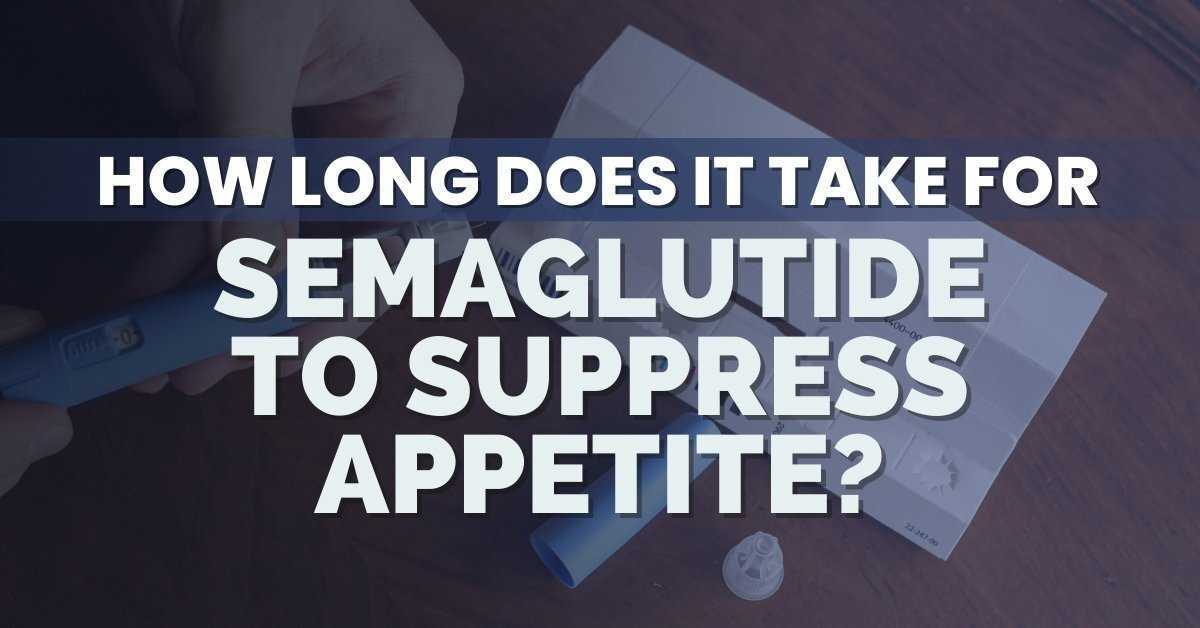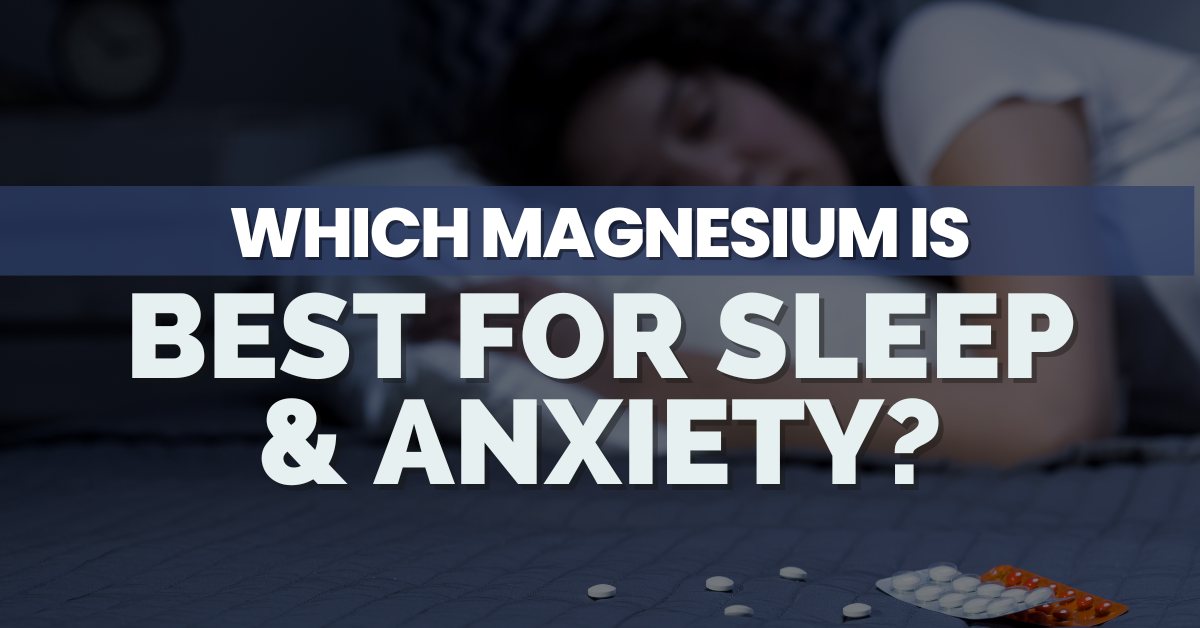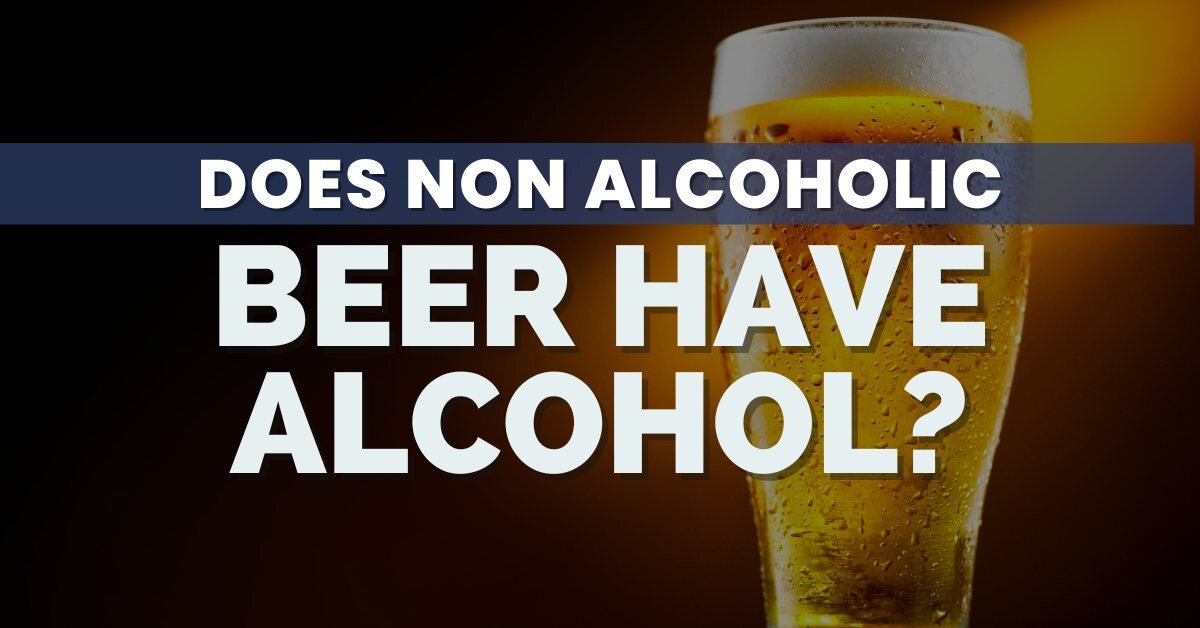
Does Non-Alcoholic Beer Have Alcohol and Why It’s Not Always 0%
Does non-alcoholic beer have alcohol? Well, depending on the brew, the alcohol content of non-alcoholic beer can range from 0.0%, like Heineken 0.0, up to 0.5%, like most craft non-alcoholic brands. This tiny amount won’t give you a buzz or any health issues if you’re healthy. So, while non-alcoholic beer might contain some alcohol, it’s minuscule.
Dive in to learn what non-alcoholic beer is all about, why people love it, and how it stacks up against regular beer. We’ll compare it to alcoholic beer and look at other non-alcoholic beverages like Super Speciosa Super Feels Chill Vibes shots.
Best Non-Alcoholic Beer Alternatives in 2024
- Super Speciosa Super Feels Chill Vibes – Best blend for relaxation
- FOCL Feel Good Drops – Best plant-based CBD drops
- Kratom Country’s Kratom Extract Shots – Best kratom shots for energy
- Kratom Country’s Kratom Powder for Tea – Best kratom tea for mood enhancement
- CRYO Kratom Shots – Best concentrated kratom extract
- Mitra9 Variety Kratom Seltzer – Best kratom seltzer
What Is Non-Alcoholic Beer?
Despite its name, non-alcoholic beer isn’t always entirely alcohol-free. By law, in the United States, non-alcoholic beers can contain up to 0.5% alcohol by volume (ABV) [1].
While these beers are marketed as alcohol-free, they do contain trace amounts of alcohol, similar to those found in ripe bananas or fresh orange juice.
From that, we can say non-alcoholic beer is a beer with most of its alcohol content removed. The science of making it starts like any other beer: brewing, fermenting, and flavoring. However, the key difference is an additional step to significantly reduce or remove the alcohol content.
How is Non-Alcoholic Beer Produced?
There are a few methods to craft non-alcoholic beer.
- One common technique is heating the beer, which evaporates the alcohol. However, this can alter the flavor, so some brewers use a vacuum to lower the boiling point, preserving more of the original taste.
- Another method involves filtering out the alcohol using a fine membrane. This method, known as reverse osmosis, separates alcohol and water from the beer and then recombines the remaining mixture with the water minus the alcohol.
Those processes mean that non-alcoholic beer isn’t entirely devoid of alcohol but contains such minimal amounts that it’s unlikely to produce any noticeable effects in your body.
The result is a beverage that provides the taste and experience of beer without the intoxicating effects, making it a popular choice for those looking to cut down on alcohol without giving up beer altogether.
Non-Alcoholic Beer vs. Near Beer
Like you, many users are also asking, “Does non-alcoholic beer have alcohol?”. At the same time, they’re also comparing them to near beers, or beers designed to have small amounts of alcohol and not be labeled “non-alcoholic.”
We’ve just discussed how much alcohol is in non-alcoholic beer, and it’s important to note that near beer has slightly more alcohol content, with an ABV usually up to 2%. This is more likely to produce a buzz; if you drink enough of it, it can cause a hangover.
Why Do People Drink Non-Alcoholic Beer?
Non-alcoholic beer is more than just a trend; it’s a lifestyle choice. People drink non-alcoholic beverages for various compelling reasons, each tied to their personal preferences. Let’s dive into why non-alcoholic beer is becoming a staple in many people’s lives.
Health-Conscious Choices
In a world where wellness is the new wealth, many are turning towards non-alcoholic beer. Ruby Warrington’s book, “Sober Curious,” highlights how cutting back on booze can boost your health [2].
Experts found that over 22% of millennials are drinking less, and another survey suggests Gen Zs are following suit, with 24% in the US and 36% outside the US saying they had never tried alcohol before [3][4].
Non-alcoholic beer fits right into this sober trend. These beverages let folks enjoy the social side of drinking without the health pitfalls.
Staying Social Without the Buzz
Ever felt like the odd one out for not drinking in a social setting? Non-alcoholic beer helps you fit in without dealing with a hangover the morning after. You get the taste and the experience minus the intoxication. It’s a perfect middle ground for those who want to join the party but also want to maintain sobriety. Plus, nobody’s judging your 0% bottle—so you can blend in while staying sober.
Hydration and Fewer Calories
Surprisingly, non-alcoholic beer can keep you hydrated. Unlike its alcoholic counterpart, non-alcoholic beer doesn’t have that pesky diuretic effect. So, this could be your go-to if you’re out for a long night. It’s also a lighter option calorie-wise. People mindful of their weight can enjoy a cold one without the guilt of extra calories piling up.
Hangover-Free Mornings
One of the biggest perks? No hangovers. Non-alcoholic beer means you can enjoy your night and wake up feeling fresh. With minimal alcohol content, it doesn’t come with next-day regrets, especially when alcohol leaves the body at a rate of 1 hour per drink. So, if you’ve got a busy morning, a non-alcoholic drink is the way to go.
Versatile Benefits
Are you the designated driver for the night? Non-alcoholic beer is a great way to enjoy the flavor without the consequences. It’s perfect for various scenarios, making it a versatile choice for many. That could mean you are the driver of the night, driving your friend’s home safely.
Social Acceptance
Once seen as a bit of a joke, non-alcoholic beer is gaining respect. People are prioritizing their health over the fear of a few laughs. In today’s world, who really cares if your beer is non-alcoholic? It’s about making choices that work for you, not worrying about what others think.
What Alcohol Alternatives Are There?
If you choose another route for after-work delight, we’ve listed and discussed some of the popular alcohol alternatives you can enjoy.
Super Speciosa Super Feels Chill Vibes – Best Blend for Relaxation
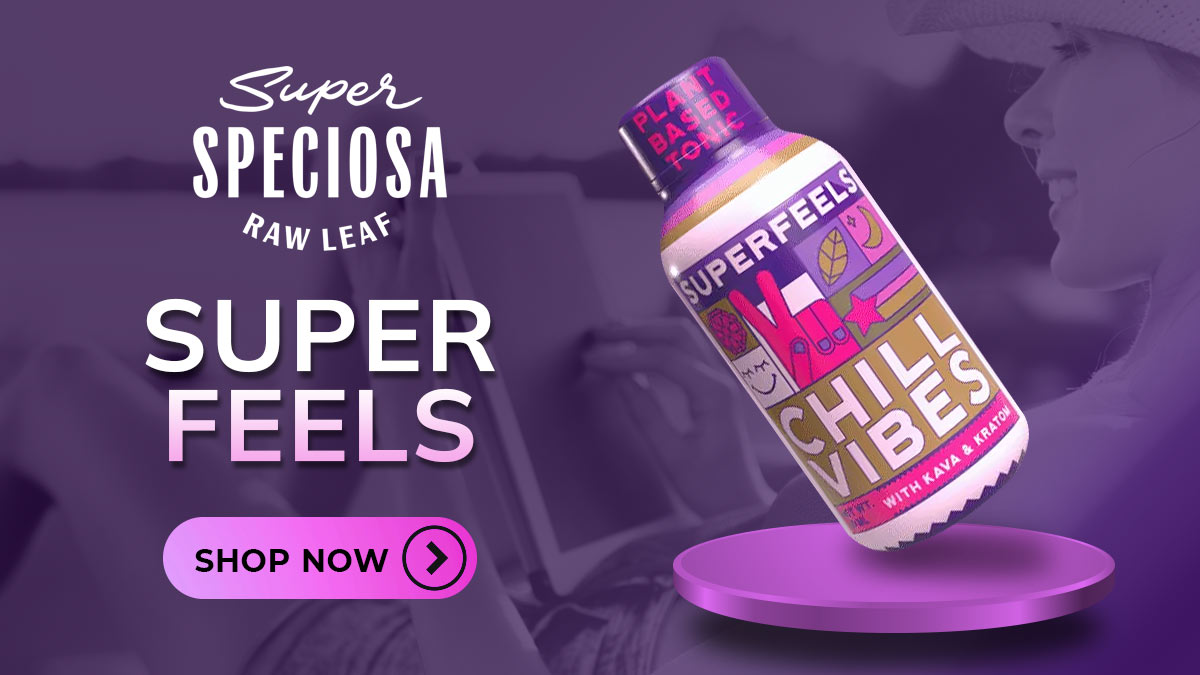
Pros
- Combines kava and kratom for a soothing effect
- Rapid-release formula for fast relief
- Easy to use
- May help reduce stress and anxiety
Cons
- Some users may find the taste strong
Super Speciosa Super Feels is a blend of kratom (35 mg) and kava (25 mg), claiming the ultimate relaxation experience. Kratom is known for its stress relief and mildly stimulating effects. At the same time, kava promotes better sleep, so it may prove an effective non-alcoholic beer alternative to unwind after a long day [5][6].
How to Use Super Speciosa Super Feels Chill Vibes
- Shake the bottle and drink half of it in a single serving.
- Don’t exceed two servings in 24 hours.
Pricing
- A 60 ml bottle of Super Feels Chill Vibes costs $12.99.
- A box of 12 shots is available for $119.99, equivalent to $9.99 per bottle.
User Reviews
Users on r/kratomreports generally praise Super Feels Chill Vibes for its quick sedating effects and convenience. Some users have noted that the taste can be quite strong and may take some getting used to.
FOCL Feel Good Drops – Best Plant-Based CBD Drops
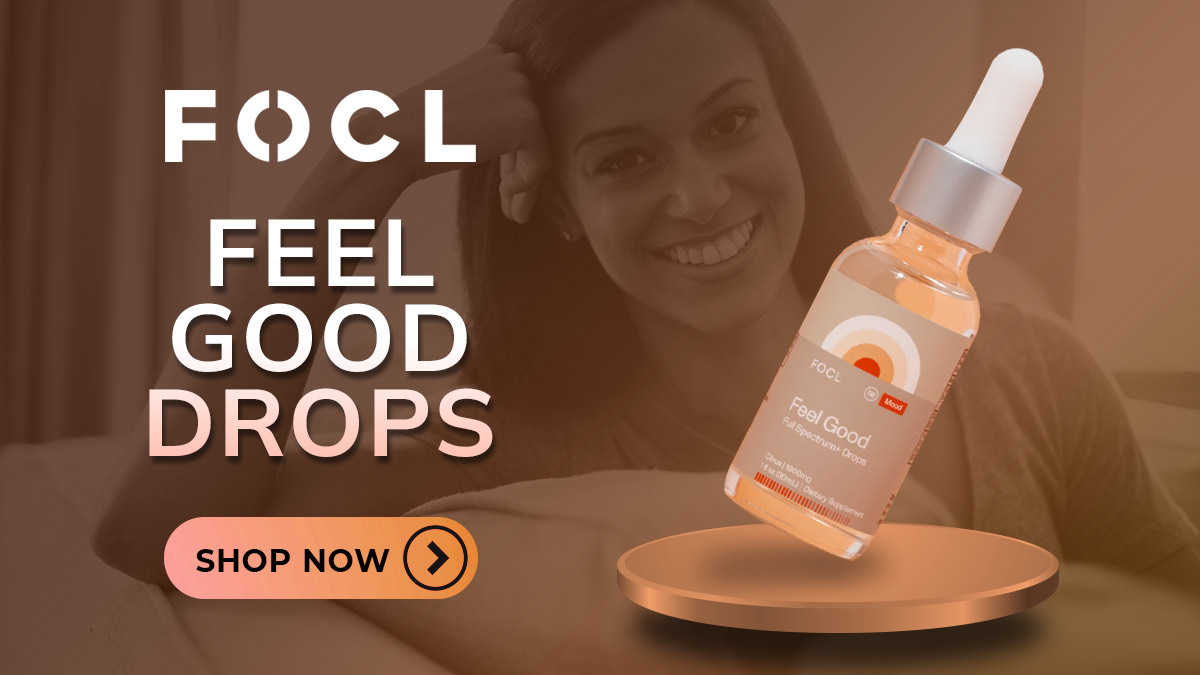
Pros
- Uses plant-based ingredients
- Known for its calming effects
- Vegan and gluten-free
- Available in cherry, mint, and orange cream flavors
Cons
- Does not offer full-spectrum products, which include THC
FOCL Feel Good Drops are crafted from True Broad-Spectrum Hemp CBD extract. It includes all the beneficial cannabinoids and terpenes from the hemp plant, minus the THC.
The CBD is extracted using CO2, ensuring a clean and solvent-free product. It’s more geared toward reducing stress, anxiety, and pain while promoting overall wellness as a non-alcoholic beer alternative [7].
FOCL emphasizes transparency and has third-party lab results to verify product purity and potency.
How to Use FOCL Feel Good Drops
- You take the drops by filling the dropper and placing the oil under your tongue.
Pricing
- A 30 ml bottle of FOCL Feel Good Drops costs $69
- If you buy at least 3 bottles or subscribe, save 20% and get a bottle for $55.20.
User Reviews
A post on CBD Thinker likes FOCL’s Feel Good Drops for its affordability and taste. What they hope the company improves on is the strength of their sleep tinctures.
Kratom Country’s Kratom Extract Shots – Best Kratom Shots for Energy
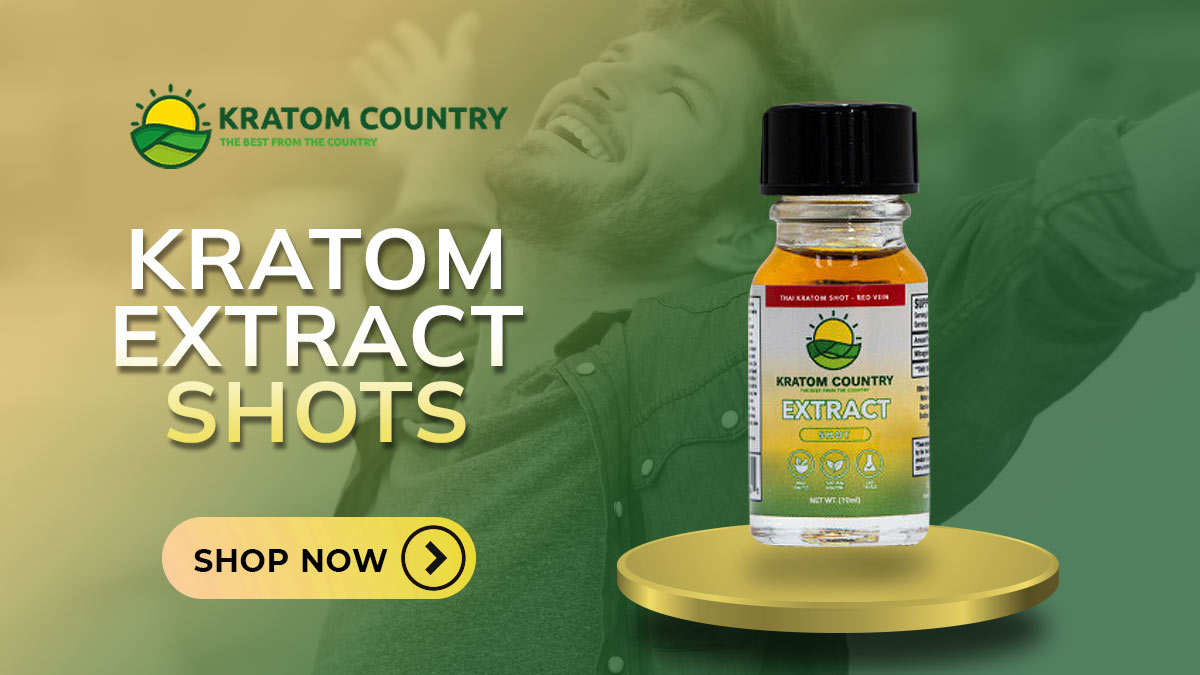
Pros
- High concentration of kratom alkaloids
- Effects can start within 15-30 minutes
- Offers red and green kratom strains for different needs
- Provides a significant increase in energy and alertness
Cons
- Has potential side effects like nausea, sweating, and dry mouth
Kratom Country’s Red Vein Thai kratom extract shots are highly concentrated and provide a fast-acting kratom experience, aiming for a boost in energy, alertness, and mood [5]. This brand of non-alcoholic beer alternatives is recommended if you need a quick energy boost, with effects often felt within 15 to 30 minutes and lasting up to several hours.
How to Use Kratom Country Red Vein
- Start by taking 20-30 mg
- Optional: Increase slowly to a comfortable level
- Always consult with a doctor first
Pricing
- 3 ampoules of Red Vein Thai kratom extract cost $39.90
- 5 ampoules cost $59.90
- 10 ampoules cost $119.90
- 15 ampoules cost $180.90
User Reviews
The only reviews we found were on their website, which may be biased. For a more objective opinion, it would be best to ask friends and family who may have used it.
Kratom Country’s Kratom Tea – Best Kratom Tea for Mood Enhancement
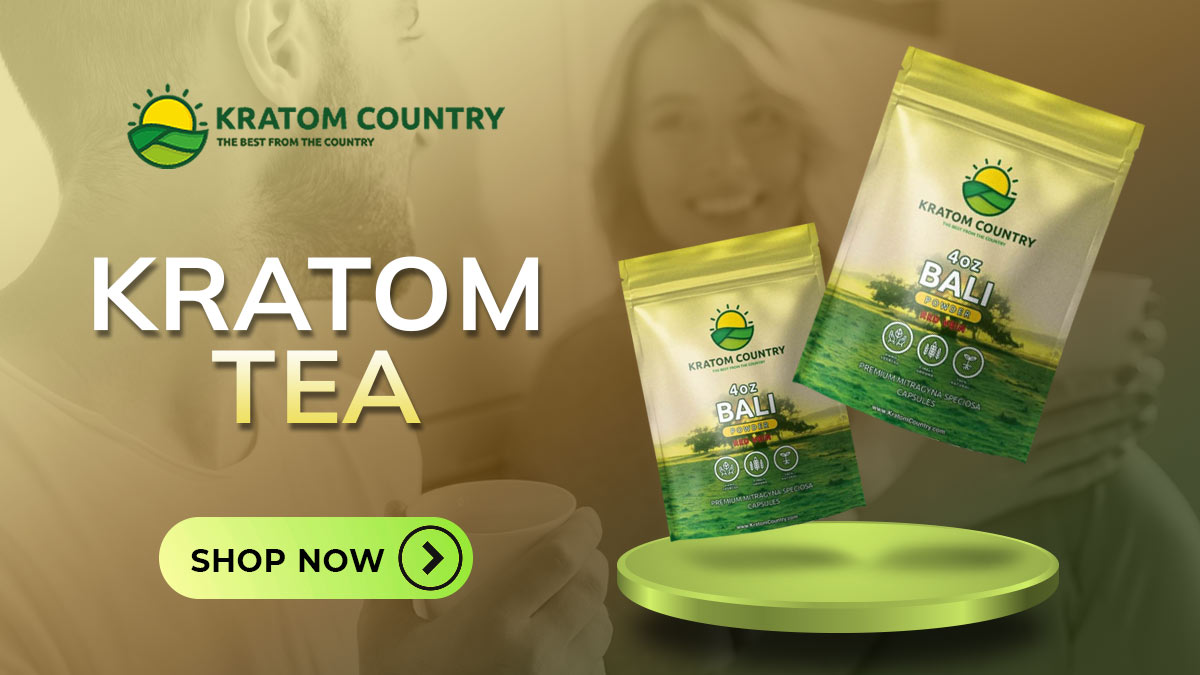
Pros
- An effective method for high absorption of kratom’s active components
- Multiple methods of preparation
- Known to boost mood and reduce stress
- It can provide a mild stimulating buzz similar to coffee
Cons
- High doses can lead to nausea, dizziness, and constipation
Kratom Country’s kratom powders are very popular among enthusiasts, and Red Bali is the most popular choice if you’re looking to make tea. It’s a convenient and enjoyable format where you can use traditional stovetop brewing, microwave brewing, or even cold brewing.
The blend aims to enhance mood, reduce stress, and provide a gentle energy boost. This non-alcoholic beer alternative is much easier on the stomach than other alternatives, making it a great pick if you have gastrointestinal issues.
How to Use Kratom Country Kratom Tea
- The company recommends taking red Bali kratom powder as kratom tea or by the toss-and-wash method.
Pricing
- 1 oz bag of Red Bali costs $7.47
- 4 oz bag costs $21.99
- 8 oz bag costs $40.99
- 16 oz bag costs $71.99
- 32 oz bag costs $116.99
User Reviews
Kratom Country is seen by many as one of the top 10 kratom vendors, and the users on r/topkratomvendor praised its variety of strains, especially the leaves, which are the core ingredients of its tea. The users’ only gripe is the lack of kratom leaf options.
CRYO Kratom Gold Extract Shots – Best Concentrated Kratom Extract
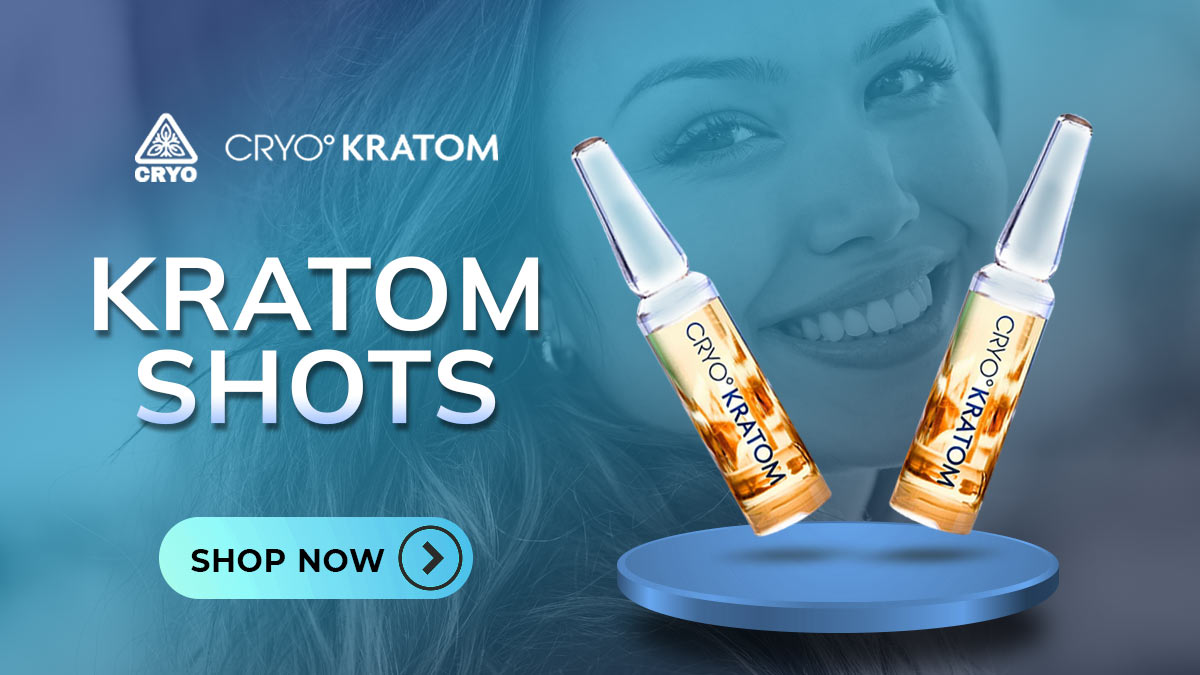
Pros
- Contains 28.6 mg of mitragynine per 1 ml
- It may help with anxiety, pain, and sleep issues
- Sterilized to remove bacteria, heavy metals, and impurities
- Enhanced taste and minimized bitterness
Cons
- Some users find the ampoules challenging to use
Cryo Kratom Gold Extract is sourced from the Kalimantan region of Borneo and is made from wild-harvested kratom leaves. Each 7 ml ampoule contains 28.6 mg of mitragynine, making it one of the most concentrated extracts available. The shots aim to offer rapid relief from anxiety and sleep disturbances, but they are also beneficial for improved taste over many competitors [8].
How to Use CRYO Kratom Gold Extract Shots
- Add 1 ampoule to your protein smoothie, ice-cold coffee, tea, or morning beverage
- Do not take more than 1 serving per 24 hours
- Do not drive or operate heavy machinery while using CRYO Kratom Gold Extract Shots
Pricing
- One ampoule of Cryo Kratom Gold Extract costs $15
- Save 20% on all orders if you subscribe
- Save 50% on your first subscription with code EXTRA30
User Reviews
A list review from The Mercury News of Cryo Kratom praises its ease of use and the company’s overall customer service. However, speak to your doctor before taking it, especially if you have any pre-existing conditions.
Mitra9 Kratom Seltzers – Best Kratom Seltzer
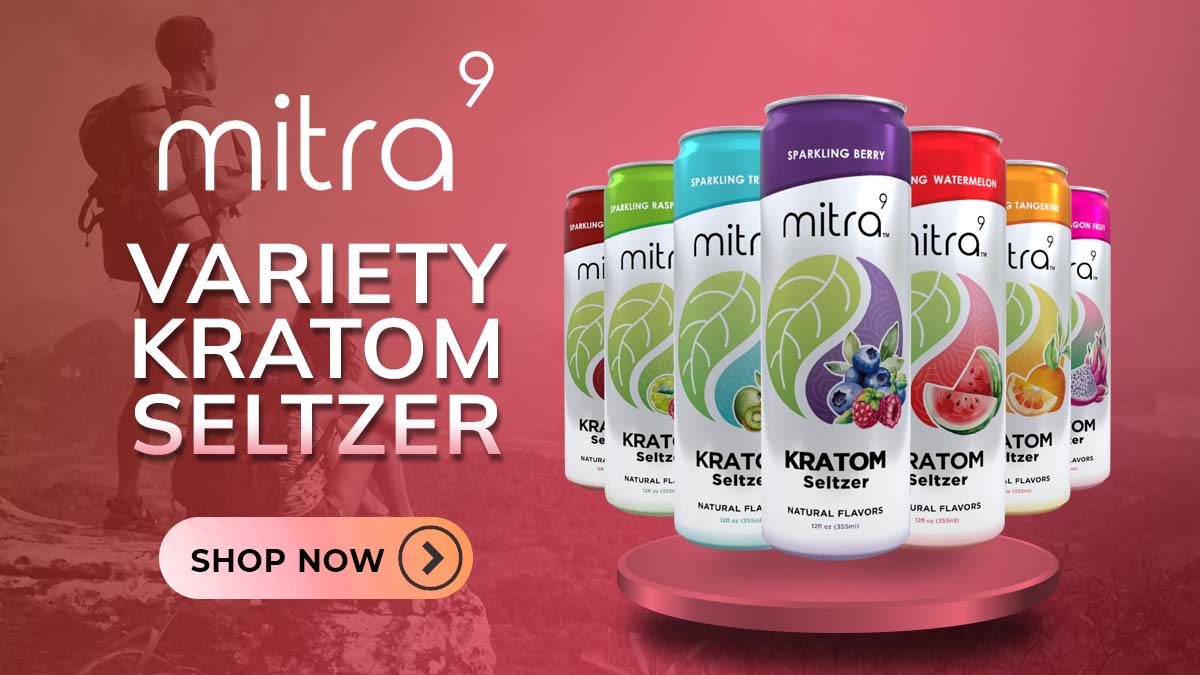
Pros
- Variety of flavors like dragon fruit, raspberry lime, and tropical blast
- No added sugars or artificial flavors
- The company ensures purity and high potency
- Known for boosting mood and providing a mild energy lift
Cons
- Limited availability in some regions
Mitra9 Kratom Seltzers combine the mood-enhancing effects of kratom with the refreshing fizz of a seltzer. Each can contains 42 mg of mitragynine, which enhances alertness. The drink is crafted with natural ingredients, and it’s gluten-free and vegan.
The flavors are carefully balanced to mask the bitterness of kratom, making the variety pack enjoyable. Mitra9 Kratom Seltzers are great non-alcoholic beer alternatives, whether you’re looking for a boost after a long workday or want to unwind.
How to Use Mitra9 Kratom Seltzers
- Drink 1 serving and do not exceed one bottle per 24 hours
Pricing
- 4 packs for $29.99; subscription price: $26.99
- 8 packs for $49.95; subscription price: $44.96
- 12 packs for $74.99; subscription price: $67.49
- 24 packs for $144.95; subscription price: $130.46
User Reviews
Mitra9 Kratom Seltzers reviews are mostly positive on Amazon, with some highlighting its taste and attractive packaging. However, not everyone likes the aftertaste it imparts.
What Is Hop Water?
Hop water is an excellent non-alcoholic beer alternative, made by infusing water with hops for flavor and aroma. Hop water is completely alcohol-free, calorie-free, and often sugar-free, which makes it an interesting yet healthy option for many. Brands like Hoplark and Lagunitas offer hop water products with a beer-like taste and no alcohol.
What’s the Taste Difference Between Non-Alcoholic and Regular Beer?
Non-alcoholic beer has come a long way from its early, watery days. If you’re wondering about the taste difference between non-alcoholic and regular beer, it’s more nuanced than you might think.
Flavor Profile
Regular beer packs a punch with a richer, more complex flavor. Alcohol tends to elevate those taste notes, giving you that depth and complexity. But non-alcoholic beer, while often lighter, isn’t necessarily bland anymore.
Think of Heineken and Budweiser non-alcoholic versions; they’re popular for their crisp, refreshing taste, showing that non-alcoholic beers can hold their own.
Mouthfeel
When it comes to mouthfeel, non-alcoholic beers generally feel lighter. Alcohol contributes to the texture, adding a certain weight that’s tough to replicate. As a result, non-alcoholic beers might come off as a bit watery or less full-bodied.
However, modern brewing techniques are closing this gap, with some non-alcoholic options mimicking their alcoholic counterparts surprisingly well.
Aroma
Smell plays a huge role in taste, and this is where non-alcoholic beers often fall short. Alcohol helps release those aromatic compounds that make beer so inviting. Without it, the aroma can be less intense. However, some non-alcoholic beers use hops cleverly to deliver a pleasing scent, even without the booze.
Brewing Process
The brewing process for non-alcoholic beer mirrors that of regular beer with an added twist. Brewers make a mash, boil the wort, add hops, and ferment just like with regular beer. The difference lies in alcohol removal.
Techniques like heating, vacuum distilling, or reverse osmosis strip the drink of its alcohol while trying to retain flavor. This delicate balancing act ensures that non-alcoholic beers still offer an enjoyable experience, even if the final product isn’t quite the same as a full-strength brew.
What Are the Dangers of Non-Alcoholic Beer?
Non-alcoholic beer is great for a lot of people, but as with everything, even non-alcoholic beer can have its fair share of possible problems or side effects, though not as harmful as the effects of typical alcoholic drinks.
Non-Alcoholic Beer Can Trigger Relapse
Non-alcoholic beer might sound like a safe bet, but it’s not always a walk in the park for recovering alcoholics.
Does non-alcoholic beer have alcohol? No. However, this brew can look, smell, and even taste like the real deal, which might cause someone in rehab or abstaining to have a huge rush of alcohol cravings.
It’s a slippery slope, especially when 70% of alcoholics relapse within the first year of sobriety. Non-alcoholic beer isn’t just a harmless substitute; it can be a trigger, nudging you back toward old habits [9].
Non-Alcoholic Beer Could Ruin Your Weight Loss Efforts
Ever thought about what’s hiding in your non-alcoholic beer? Sugar, and plenty of it. Those added sugars make it taste great but can also lead to weight gain and health issues.
Does non-alcoholic beer make you fat? While it won’t make you fat on its own, it can tip the scales if you’re not careful.
Gluten in Non-Alcoholic Beer
Non-alcoholic beers made from barley and other gluten-containing grains certainly pose a risk for people with gluten sensitivities or celiac disease. However, there are gluten-free options you can explore.
Pregnancy and Breastfeeding: A Cautious Approach
Pregnant or breastfeeding? Non-alcoholic beer might seem like a safe alternative, but it’s not a clear-cut case. Some studies show that even small amounts of alcohol can be risky for developing babies [10].
And while moderate drinking might not harm your breastfeeding infant, why take the chance? Experts often advise avoiding non-alcoholic beers just to be on the safe side.
Non-Alcoholic Beer is Prone to Pathogens
Here’s a twist: non-alcoholic beers might be more prone to bacterial contamination. Without alcohol’s natural preservative qualities, these brews can become a breeding ground for pathogens. Think of it as a food product that needs careful handling to avoid spoilage.
If the thought of bacteria lurking in your drink doesn’t sit well, consider this another red flag.
FAQs on Non-Alcoholic Beer
Below, we address some of the more common questions on non-alcoholic beer alternatives with some straightforward queries and answers.
Is Non-Alcoholic Beer Bad for Your Liver?
Non-alcoholic beer isn’t typically bad for your liver. According to a study in the Journal of Alcohol and Alcoholism, there’s no link between non-alcoholic beer and liver damage in healthy people [11].
Is Non-Alcoholic Beer Healthier Than Real Beer?
Non-alcoholic beer might edge out regular beer in some health aspects. It packs fewer calories, making it waistline-friendly. But beware, some versions sneak in extra sugars and artificial ingredients. Always check the labels. Healthier, yes, but it’s no superfood.
Can You Get a Buzz From Non-Alcoholic Beer?
Generally, no. Non-alcoholic beer usually has less than 0.5% alcohol—practically next to no alcohol. You’d need to drink an absurd amount to feel tipsy. Some mood-enhancing beers might give a slight buzz, but it’s rare. Does non-alcoholic beer have any alcohol in it? Yes, but not enough to intoxicate.
Will Non-Alcoholic Beer Show up on a Urine Test?
It can. Although non-alcoholic beers have minimal alcohol content, frequent consumption can trigger a positive result in a urine test. Sensitivity, amount consumed, and timing all play a role. For most casual drinkers, it’s not a worry. Always check how much alcohol non-alcoholic beer has before any upcoming tests.
Is There a Legal Age for Non-Alcoholic Beer?
Depends on where you are. Some countries don’t regulate it, while others treat it like regular beer. In the US, laws vary by state. Always check local rules before buying. Non-alcoholic beer might not be a free pass for underage drinkers everywhere.
Am I Still Sober if I Drink Non-Alcoholic Beer?
Probably yes. With less than 0.5% alcohol, it’s hard to get drunk from it. But if you’re in recovery, the taste and ritual might trigger cravings. Know your limits. Drinking non-alcoholic beer is often considered safe, but it’s a personal choice.
How Many Non-Alcoholic Beers Equal One Beer?
About 10. Non-alcoholic beer usually contains under 0.5% alcohol, so you’d need to drink a lot to match a regular beer’s punch.
Can You Drink Non-Alcoholic Beer with Medication?
In most cases, yes, but check with your doctor first. Even a trace amount of alcohol in non-alcoholic beer can interact with certain drugs or medication. For example, antidepressants or sedatives might not mix well. Always read the labels and consult a healthcare provider. Non-alcoholic beer pregnancy concerns also warrant caution.
Does Non-Alcoholic Beer Have Alcohol? Final Thoughts
Non-alcoholic beer can be a smart choice if you’re aiming to cut back on alcohol without ditching the beer experience. With its minimal alcohol content, it’s an option that helps you fit well in social scenes without the side effects synonymous with regular alcoholic drinks.
However, remember, it’s not a foolproof zero-alcohol solution, so always check labels. If you’re mindful about your health and still want to enjoy a cold one, non-alcoholic beer alternatives like Super Speciosa Super Feels Chill Vibes might just be the middle ground you’ve been looking for.
References
- Adamenko K, Kawa-Rygielska J. Effect of Hop Varieties and Forms in the Hopping Process on Non-Alcoholic Beer Quality. Molecules. 2022 Nov 16;27(22):7910. doi: 10.3390/molecules27227910. PMID: 36432011; PMCID: PMC9692510.
- Ruby Warrington, author, sober curious. (n.d.). VML. https://www.vml.com/insight/ruby-warrington-author-sober-curious
- Craft beers without the buzz: Brewing new options for the ‘Sober curious’. (2019, June 20). NPR. https://www.npr.org/sections/thesalt/2019/06/20/733476733/craft-beers-without-the-buzz-brewing-new-options-for-the-sober-curious
- Global Web Index. (2019, June). Global Trends Among Gen Z. The Youth of the Nations, 8.
- Swogger MT, Smith KE, Garcia-Romeu A, Grundmann O, Veltri CA, Henningfield JE, Busch LY. Understanding Kratom Use: A Guide for Healthcare Providers. Front Pharmacol. 2022 Mar 2;13:801855. doi: 10.3389/fphar.2022.801855. PMID: 35308216; PMCID: PMC8924421.
- Bian T, Corral P, Wang Y, Botello J, Kingston R, Daniels T, Salloum RG, Johnston E, Huo Z, Lu J, Liu AC, Xing C. Kava as a Clinical Nutrient: Promises and Challenges. Nutrients. 2020 Oct 5;12(10):3044. doi: 10.3390/nu12103044. PMID: 33027883; PMCID: PMC7600512.
- Moltke J, Hindocha C. Reasons for cannabidiol use: a cross-sectional study of CBD users, focusing on self-perceived stress, anxiety, and sleep problems. J Cannabis Res. 2021 Feb 18;3(1):5. doi: 10.1186/s42238-021-00061-5. PMID: 33602344; PMCID: PMC7893882.
- Johnson LE, Balyan L, Magdalany A, Saeed F, Salinas R, Wallace S, Veltri CA, Swogger MT, Walsh Z, Grundmann O. The Potential for Kratom as an Antidepressant and Antipsychotic. Yale J Biol Med. 2020 Jun 29;93(2):283-289. PMID: 32607089; PMCID: PMC7309668.
- Kharb, R., Shekhawat, L. S., Beniwal, R. P., Bhatia, T., & Deshpande, S. N. (2018). Relationship between Craving and Early Relapse in Alcohol Dependence: A Short-Term Follow-up Study. Indian journal of psychological medicine, 40(4), 315–321. https://doi.org/10.4103/IJPSYM.IJPSYM_558_17
- Adiong, J. P., Kim, E., Koren, G., & Bozzo, P. (2014). Consuming non-alcoholic beer and other beverages during pregnancy and breastfeeding. Canadian family physician Medecin de famille canadien, 60(8), 724–725.
- Alcohol and Alcoholism (Oxford, Oxfordshire). Oxford ; Oxford University Press, 2024. PDF.



